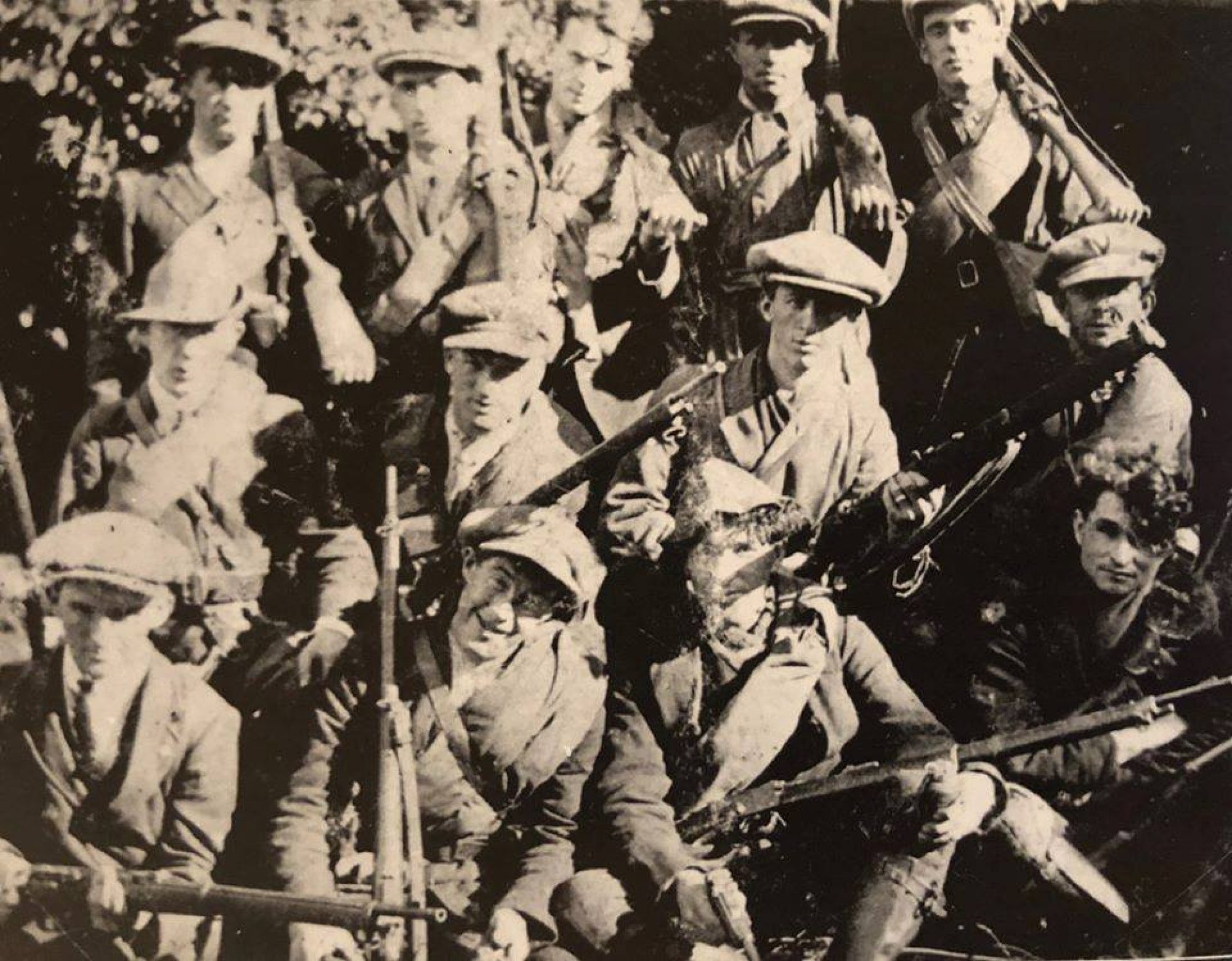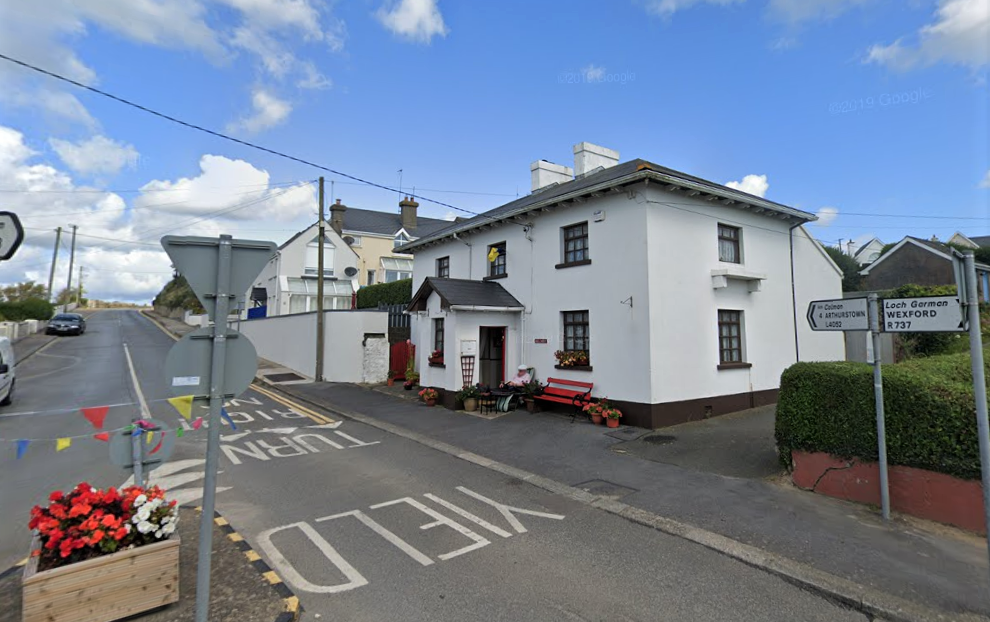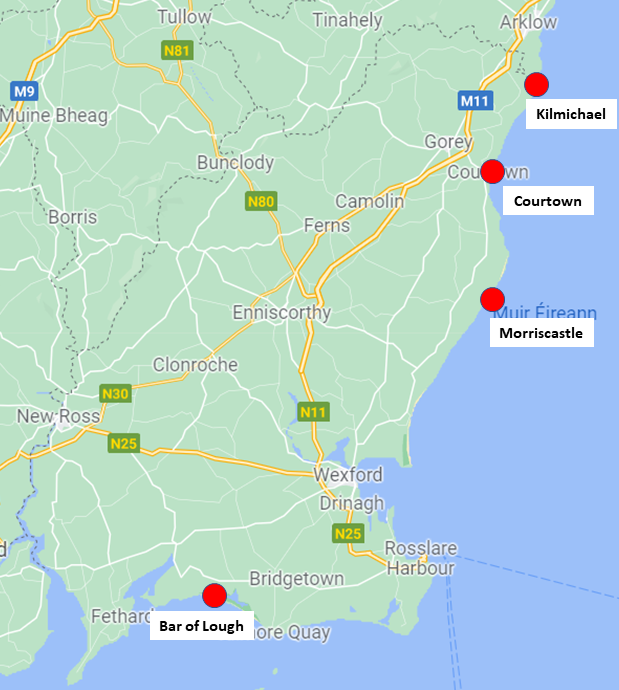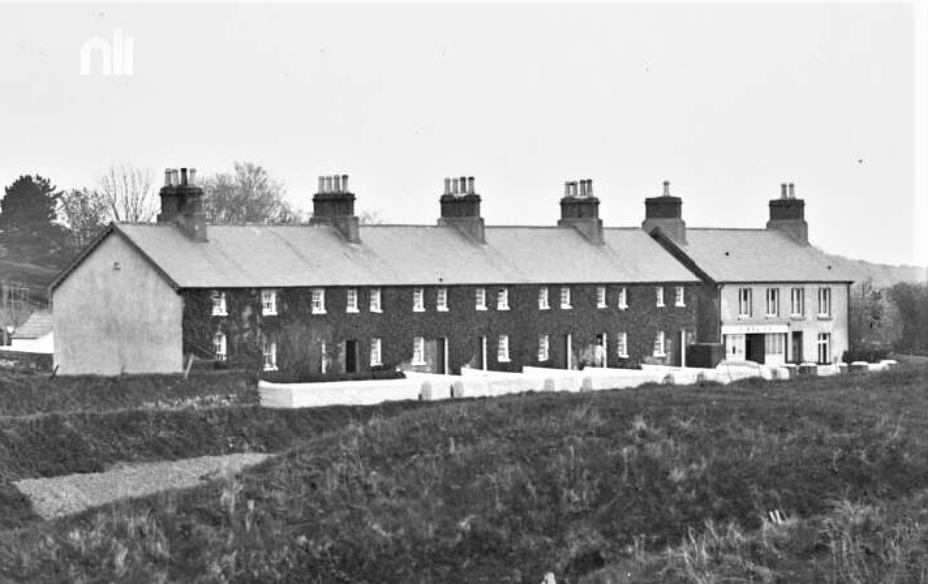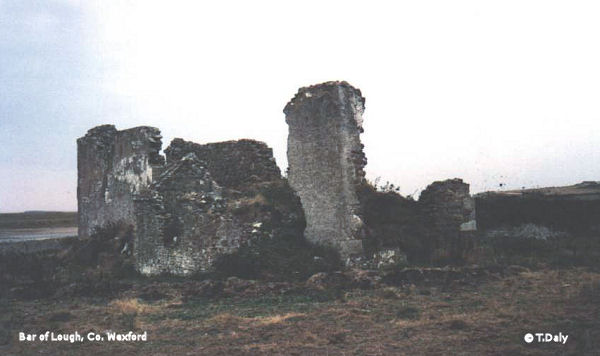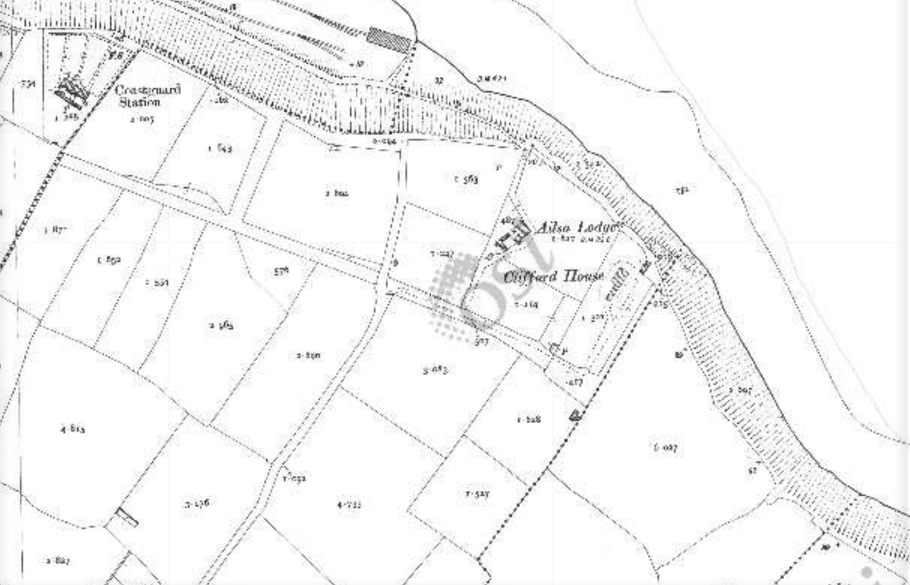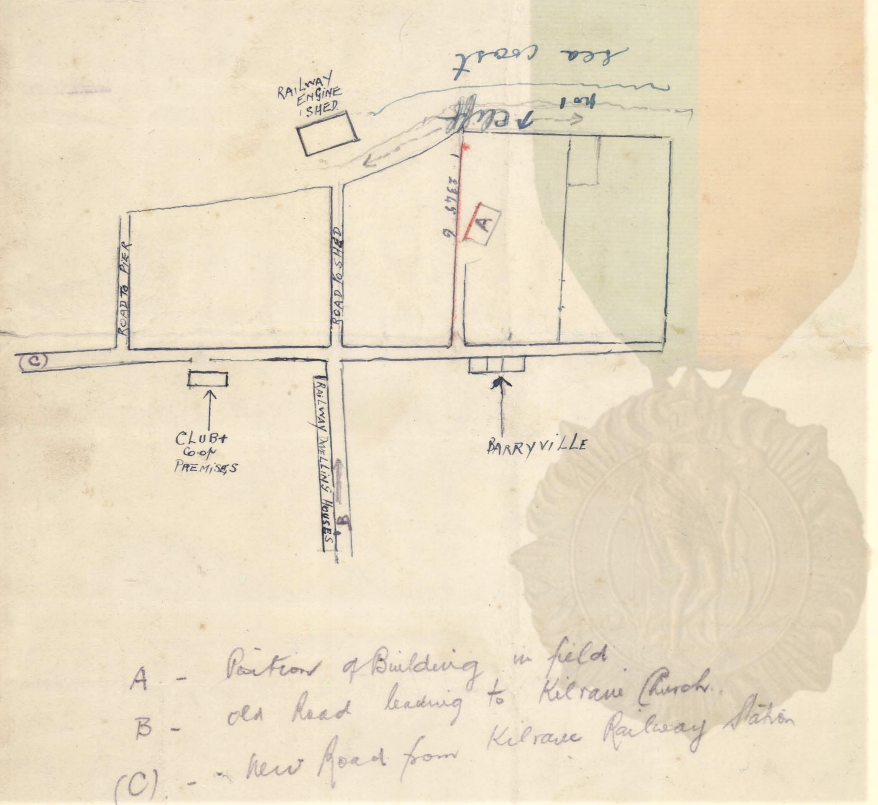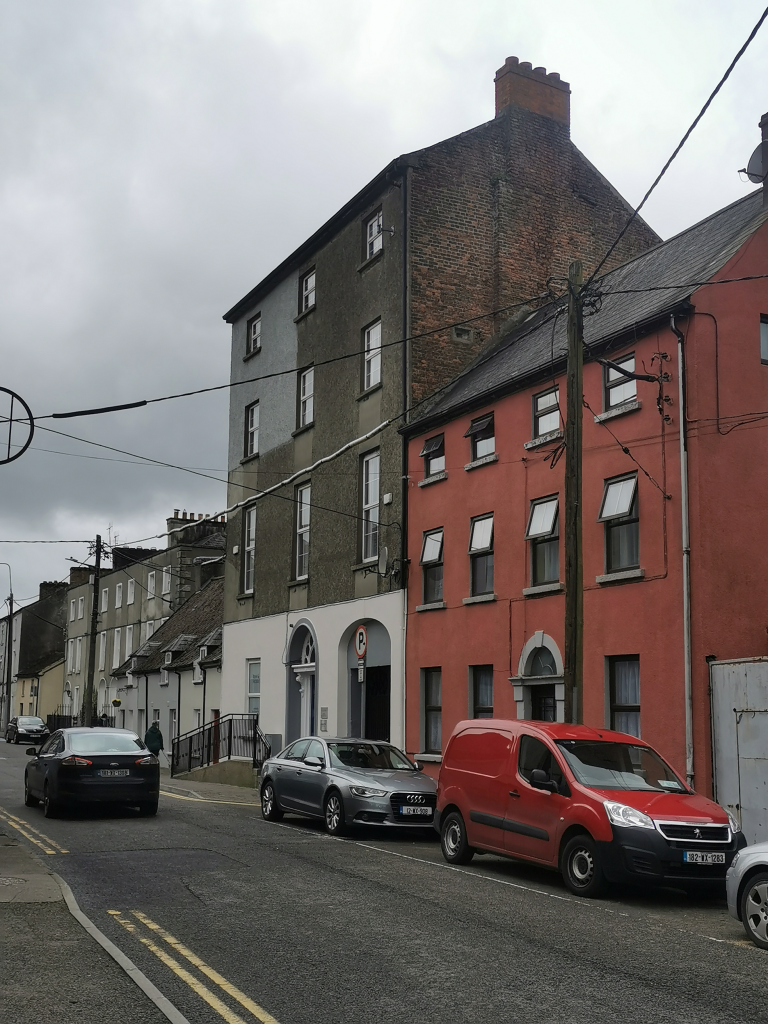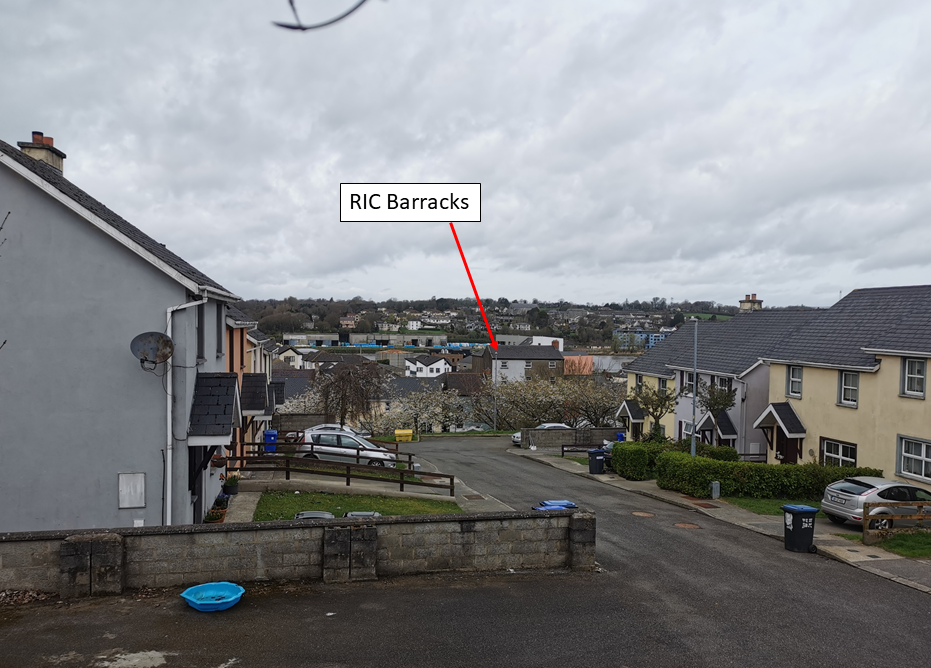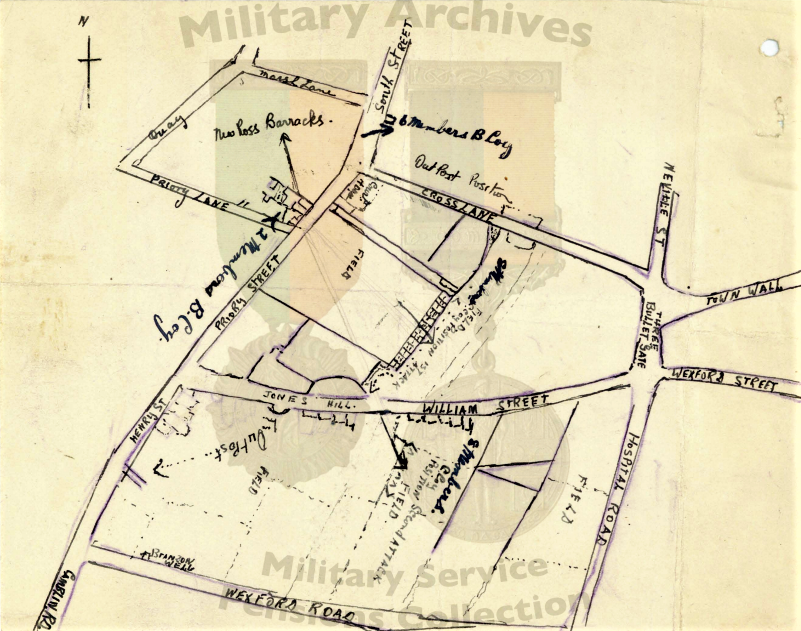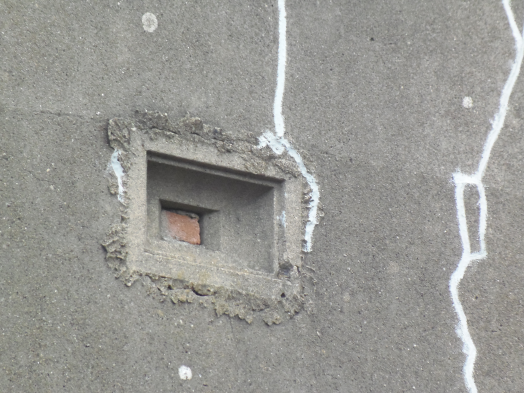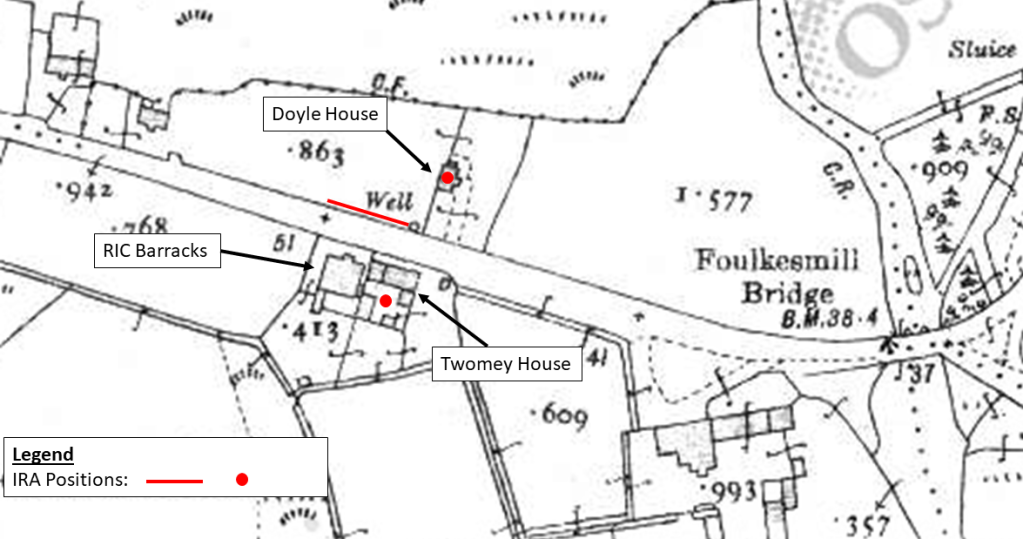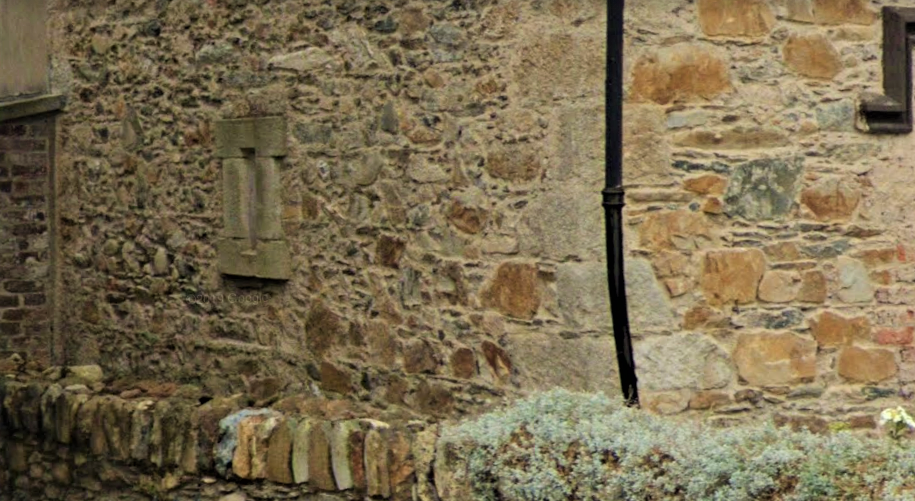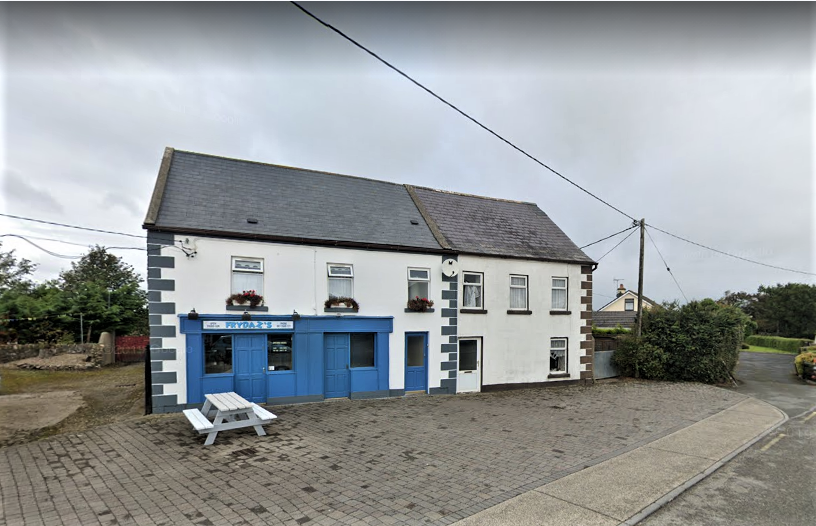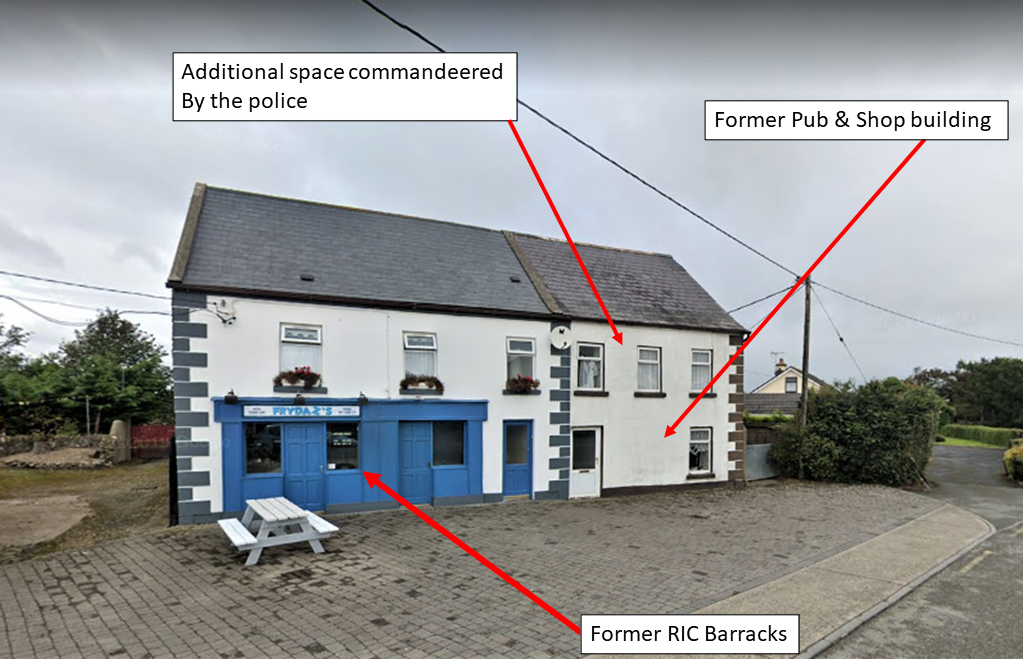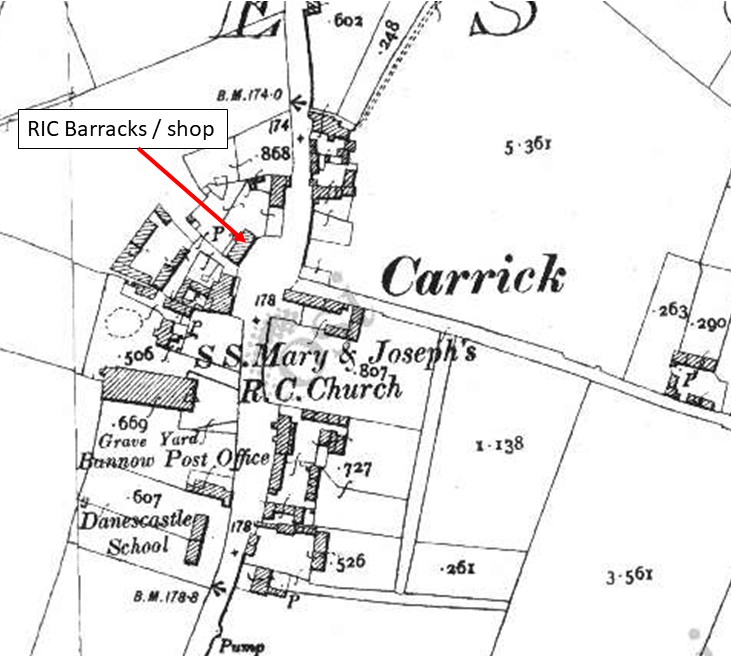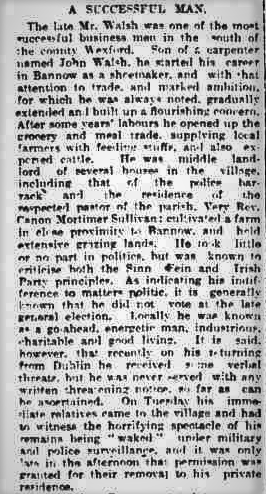During the Irish War of Independence the Irish Republican Army’s organisation was based upon a system of Brigades, Battalions and Companies, the latter of which being the smallest unit. The territorial boundaries of these units was influenced by various elements from geographic to logistical but were not restricted by pre-exisiting borders i.e. parish and county. This was the case for the ‘North Wexford Brigade’, whose fourth Battalion area including a part of south Wicklow.

In comparision to the rest of the Brigade Area the fourth battalion seems to have been the least active, based upon an analysis of the Brigade Activity Files. One incident of note however is referenced in the activities of the Crossbridge Company when it was noted on the 26th of June that Tinahely RIC barracks was attacked.
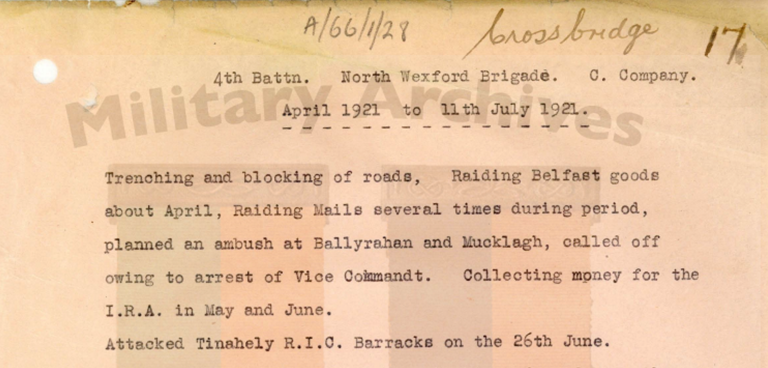
While reference to the event itself are scant the withness statement of one of those involved, James O’ Toole from Gorey sheds some light on the circumstances surrounding the attack. The North Wexford Brigade Flying Column, of which James was a member, had decided to snipe the building after a planned ambush just outside the town never materialised.
‘At dark on the second day we withdrew from the position in Cobbler’s Lane and moved into a field beside the town. We had been told by the local Volunteers that a patrol of 4 to 6 armed R.I.C. men passed that way every night. As the patrol had not come at 10 o’clock we left our position in the field and moved into the town and sniped the R.I.C. barracks for about 15 minutes. The R.I.C. returned fire and sent up Verey lights. They continued firing for over half an hour after we retired.’ (Source: James O’ Toole, Bureau of Military History Withness Statement # 1084, p7)
Unfortunatly no further information is avaliable regarding the attack leaving some elements of the operation unknown such as the IRA positions. The incident though is comparable to similar attacks during the period with the aim being not to capture the barracks but simply to harrass the occupants inside. this in turn would have had a knock on affect on moral for the R.I.C. A force of military of Black and Tans most likley occupied the barracks as well to augument the dwindling police numbers. The garrison however would have been well armed with rifles, revolver and grenades. In comparision to this James O’ Toole in his statement highlighted the Colum’s lack of arms just prior to the attack stating ‘At this stage we had only one or two rifles, the remainder had shotguns, but we had a good supply of buckshot.’ (Ibid)
Tinahely R.I.C Barracks
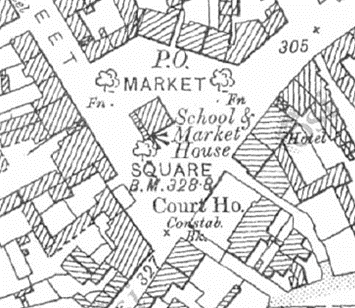

The R.I.C building was located at the southern end of the square, occupying a prominent position looking down upon the town’s main thoroughfare. Like many other barracks at the time it can be assumed that it was most likley fortified with steel shutters on the windows, sandbags and barbed wire entanglements. A month after the attack a truce was agreed that brought an end to the War of Independence and during the remaining months of that year the barracks was vacated by the RIC with the force consolidating itself in major urban areas in a policy of reduction during the truce period. In December 1921 a notice appeared in the Wicklow people newspaper stating that the barracks, which had been vacated some months ago, was reportedly sold to a merchant in the town who was considering converting it into a ‘house of pleasure, such as a picture house or concert hall’ (Wicklow People. 21st December 1921, p6)It would appear however that any such future plans for the building were short lived as it was burned to the ground during the ensuing Civil War. (Wicklow People, 26th August 1922 p6). It was later repaired in 1927, functioning as a Garda Station for a time after (Wicklow People, 25th June 1927, p5). The building is still visible today and stands as a physical link to the War of Independence period.
Bullet riddled clothing
In October 1921 the Leinster Leader Newspaper reported on a claim concerning damage caused to one of the R.I.C constables clothing during the attack in June. A constable Bergin claimed £10 for his civilian ‘suit of clothes’ that was ‘perforated with bullets and shots from the attacking party’ during the attack on the barracks on the 27th of June. He further stated the attack took place at 3:45 and lasting for thirthy minutes. Bergin stated to the judge how he had only bought the clothing three years earlier for a sum of £5 and ‘had worn them very little’. The judge reffered to the increase in the price of clothing and awarded the constable £6 compensation. (Leinster Leader, 22nd October 1921, p22)
Sources
Bureau of Military History Withness Statement: James O’ Toole #1084
Leinster Leader, 22nd October 1921, p22
North Wexford Brigade Activitiy Reports
Wicklow People. 21st December 1921, p6
Wicklow People, 26th August 1922 p6
Wicklow People, 25th June 1927, p5
